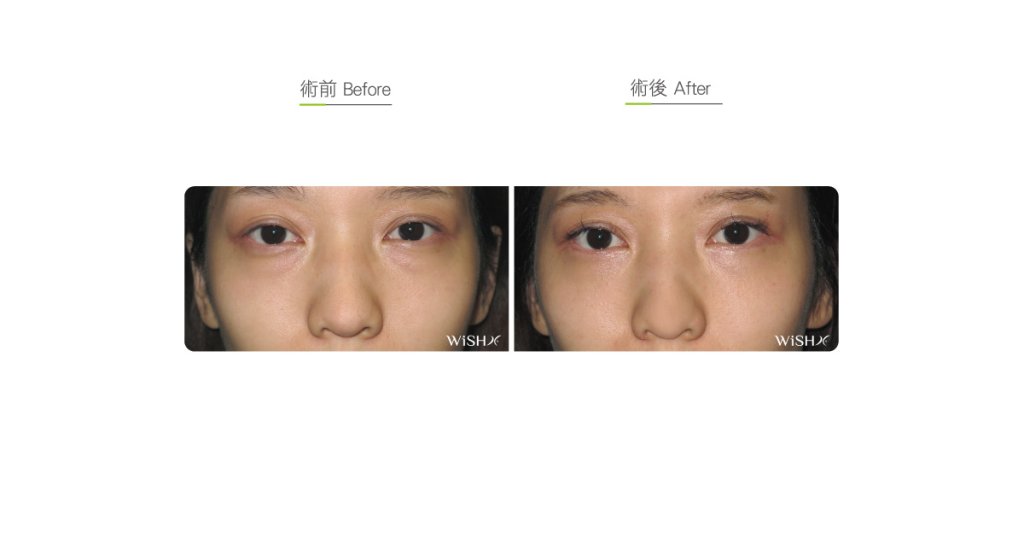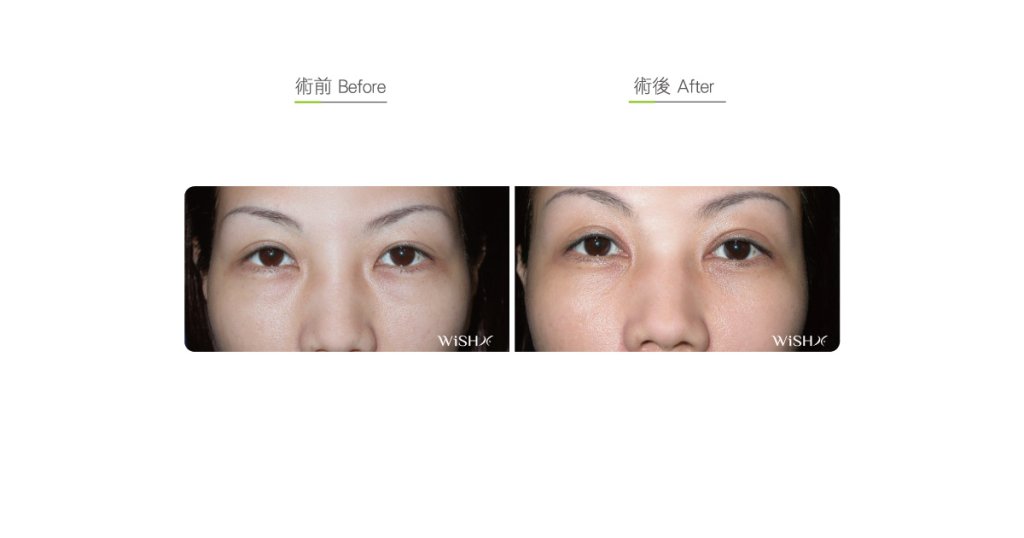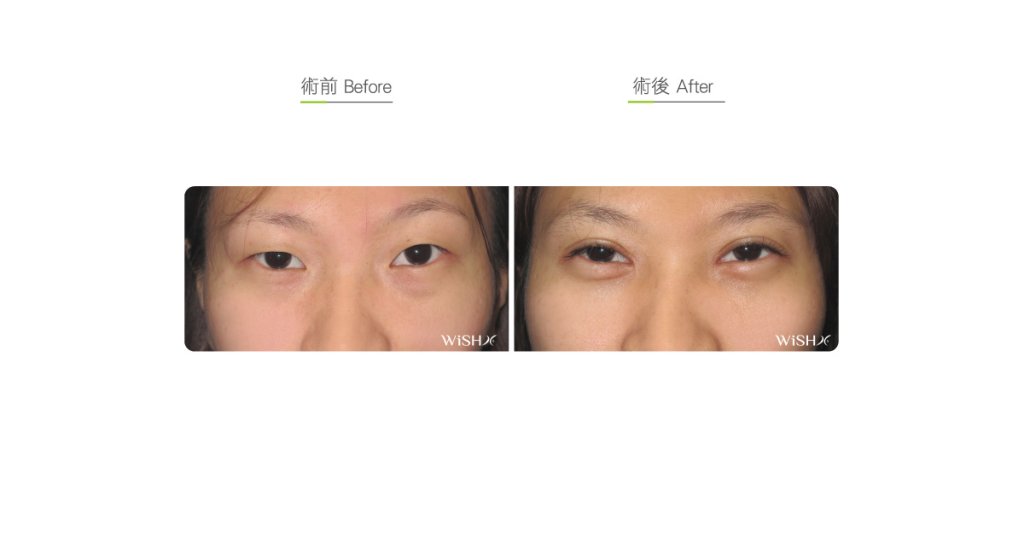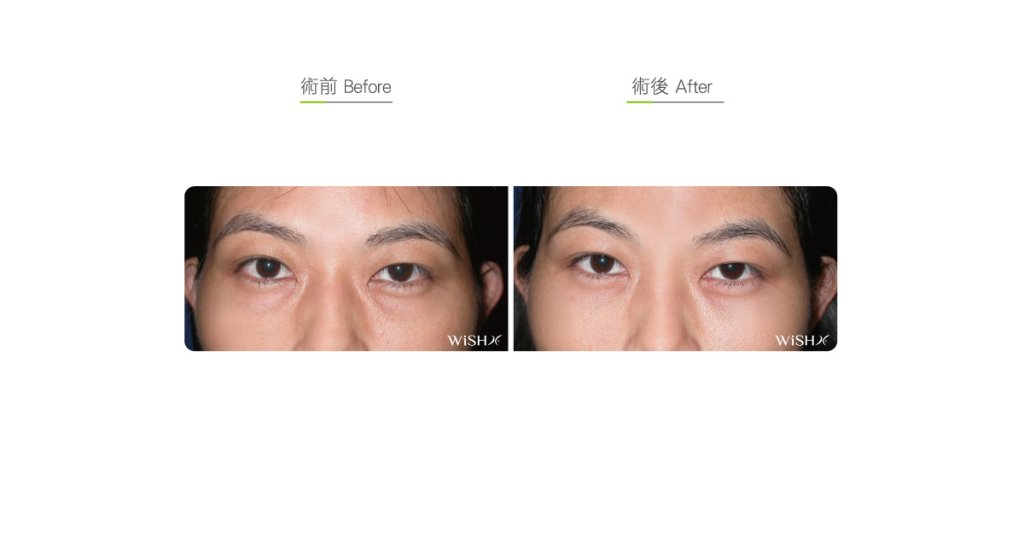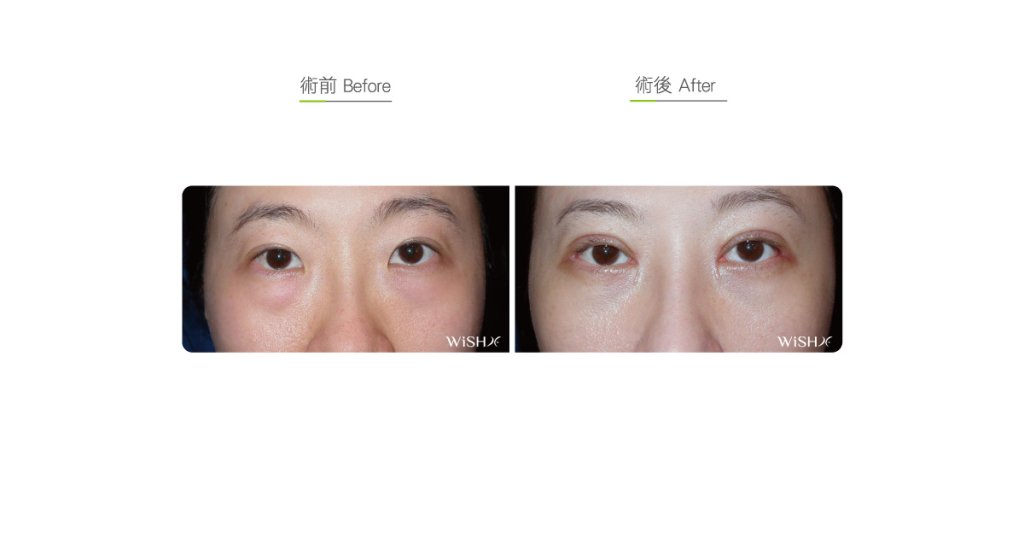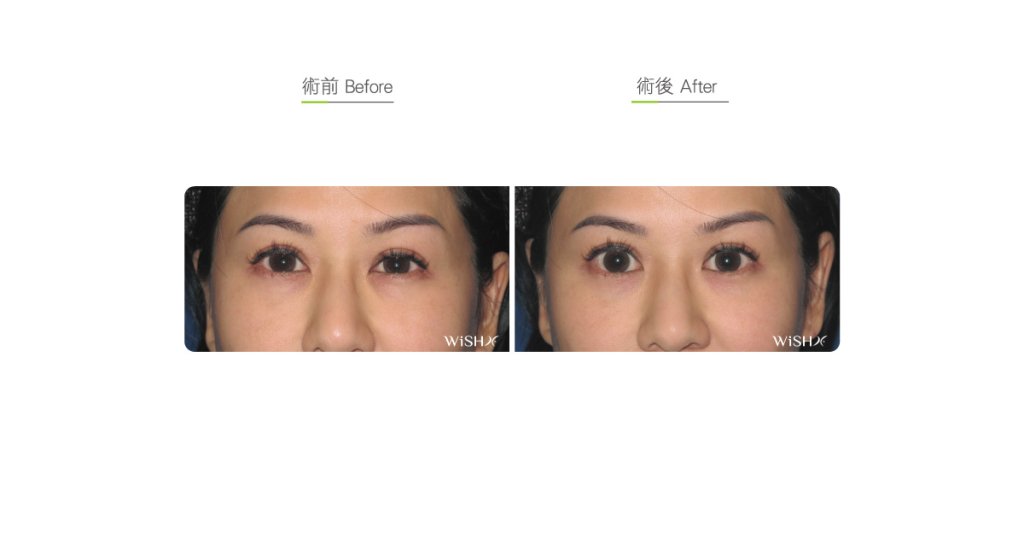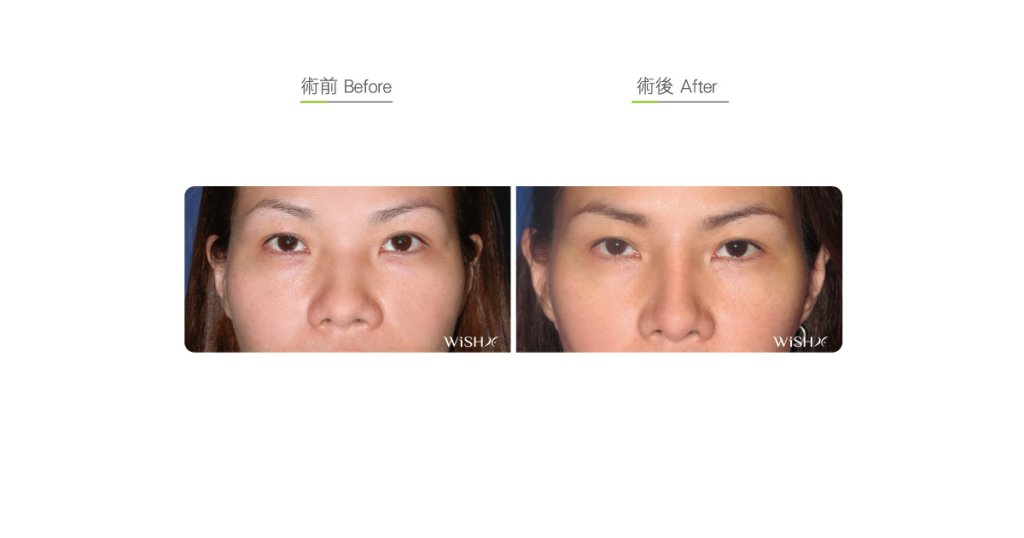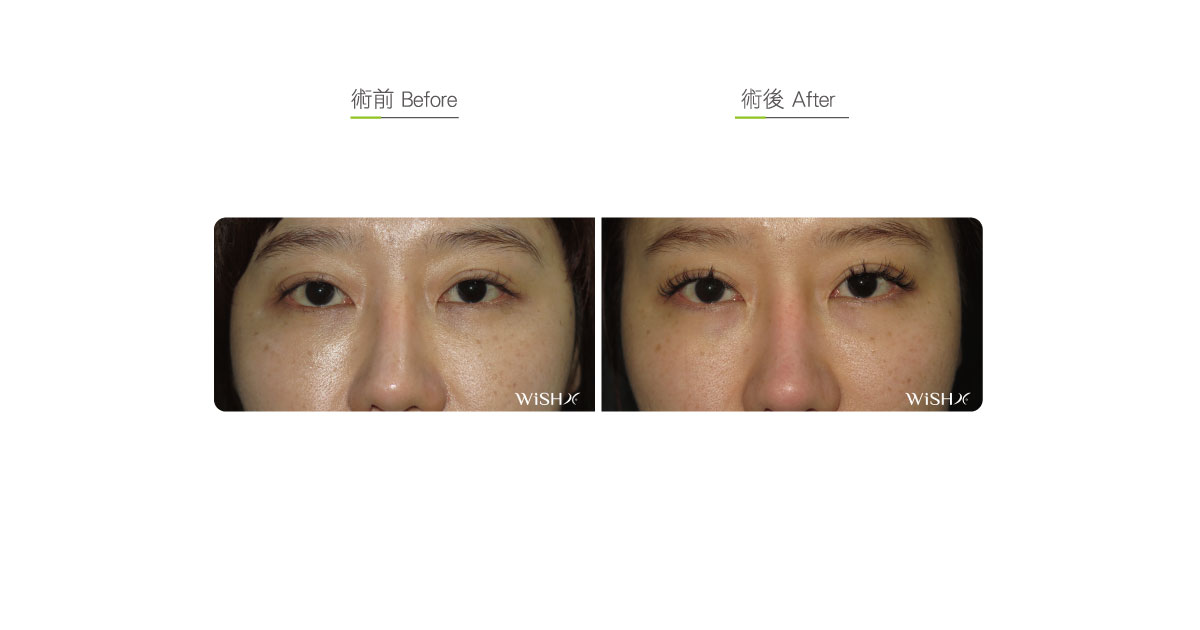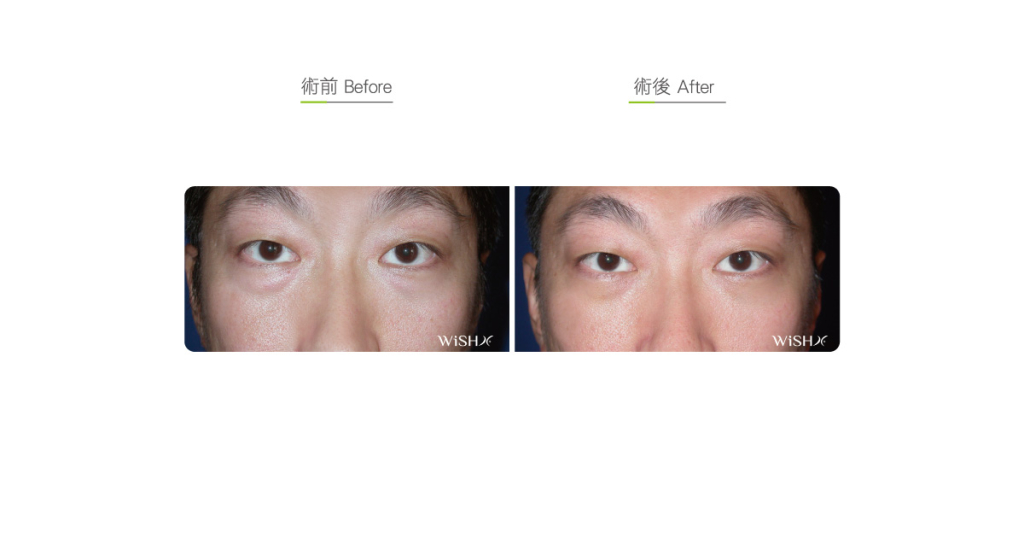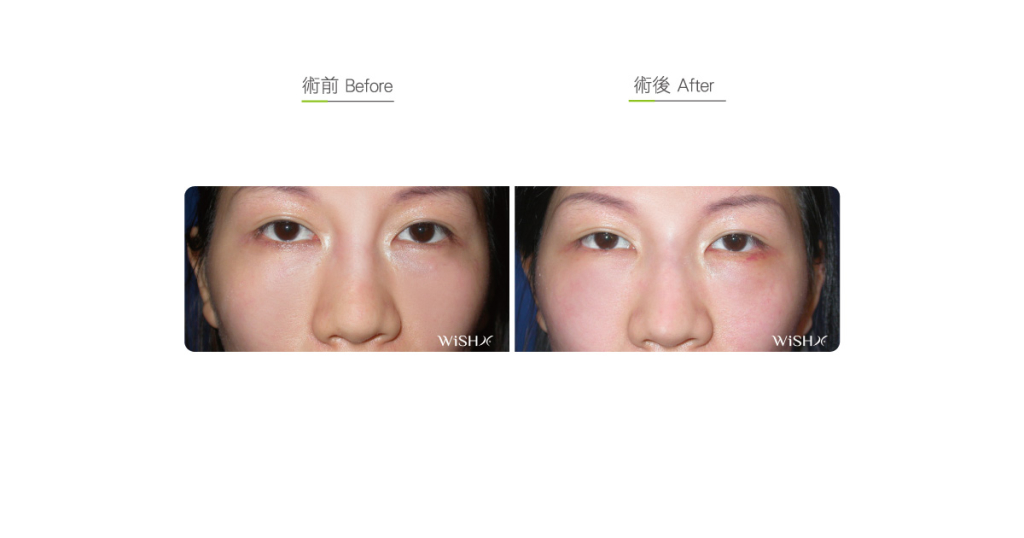Trans-conjunctival Eye Bag Removal
This is also called non-scar eye bag removal which only needs an incision of approximately 0.5 cm inside the tarsal plate to remove the eye bag completely. Anatomically an eye bag is formed as the orbital fat pads, originally at the inferior or posterior eyeballs, become loose due to cumulative uses and shift and bulge toward the anterior skin, which ultimately causes lower eyelid bulging or skin laxity. Besides, the eye bag is frequently accompanied by deep tear-trough grooves or periorbital dark circles, thus further aggravating the lusterless eyes or aging of the eyes. Causes comprise natural aging, frequently staying up late, sleep deprivation, excessive eye use, or even severe myopia. If the eye bag is treated early by this technique, it generally avoids scars left by the external incision surgery that need to be corrected in the later state.
For early mild eye bag bulging or an eye bag that still does not cause skin laxity, simple internal incision eye bag removal is adopted or concurrent fat transfer is performed to fill the mild tear trough depression. The incision is created at the internal margin of the conjunctiva inferior to the eyeball, measuring approximately 0.5 cm. Dr. Chuang dissects and removes the excess fats in the lower eyelids via the small incision to make the lower eyelid smooth. Because no incision is made at the skin, the surgery does neither leave any scar nor change the eye shape, which is the most conventional eye bag correction. Nevertheless, merely aimed at the removal of the eye bag, this technique does not involve the resection or tightness of the lower eyelid skin, which may lead to partial eyelid looseness or deepened fine lines after eye bag removal. Therefore, the indications should be conscientiously evaluated carefully to avoid creating further problems after surgery.
Surgical conditions
Duration
- Type of anesthesia: IV sedation + local anesthesia
- Surgical incision: An aApproximately 0.5-cm incision at the medial margin of the inferior palpebral conjunctiva
- Recovery: 3–5 days
- Removal of stitches: No
General instructions
No food and water on the day of surgery
- Avoid wearing contact lens for 1 week postoperatively.
- Frequently apply warm compresses to the eyes for 1 month postoperatively to help subside the swelling.
- Avoid smoking, and alcohol, and eye compression, and massage for 3 months postoperatively.
Ideal candidates
- Young patients with a lower eye bag whose skin is still elastic
- Patients having a bulging eye pouch, which is characteristic of early symptoms
- Those with mild tear- -through depression (depressed eye pouch)
- Those whose tear- -through grooves are unable to be corrected by a simple filler or a simpleautologous fat injection
Potential complications
- Lower eyelid laxity or fine lines
- Ocular socket depression
- Incomplete correction
- Early recurrence
Surgical advantages
-
The surgery leaves no scar.
-
The pPostoperative recovery is fast (swelling may subsides in approximately 5–7 days).
-
It does not affect lower eyelid elasticity or the youthline contour.
-
It does not alter the eye shape or size.
-
There is no risk of palpebral eyelid ectropion.
Surgical drawbacks
-
It is unable to eradicate deep tear- -through depression.
-
Excess fat removal is prone to cause ocular socket depression.
-
The sSurgical results may not last a long time (approximately 3–5 years).
-
It may aggravate lower eyelid laxity or fine lines.

